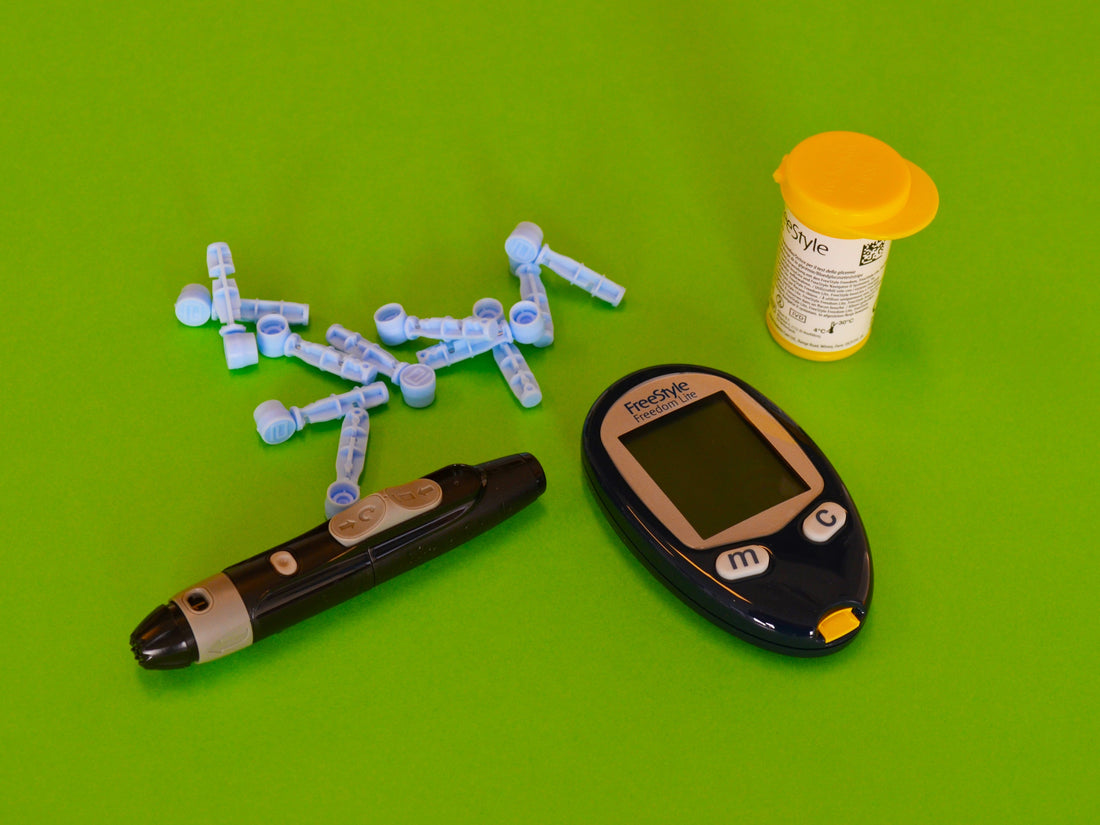
Choosing the Best Diabetic Compression Socks
Share
Living with diabetes often means paying extra attention to your health, especially when it comes to your legs and feet. One way to do this is by wearing diabetic compression socks.
These socks are designed to improve circulation and reduce the risk of swelling and blood clots. They apply gentle pressure to your legs, promoting blood flow from your legs back to your heart.
But with so many options available, how do you choose the best diabetic compression socks for women?
This guide will help you navigate the world of diabetic compression socks. We'll cover everything from the key features to look for, to understanding the right size and compression level for you.
We'll also explore different styles and options, and where to buy these socks.
By the end of this guide, you'll be well-equipped to make an informed decision about the best diabetic compression socks for your needs.
Understanding Diabetic Compression Socks
Diabetic compression socks are specialized hosiery designed to enhance blood flow in the legs. They apply graduated pressure from the ankle upwards to facilitate circulation. This promotes better blood return to the heart, which is essential for those with diabetes.
These socks differ significantly from standard socks in their function and design. They offer non-binding support and are looser to prevent constriction, unlike traditional socks. This non-binding nature helps reduce the risk of pressure points and constricted blood flow.
The level of compression in diabetic socks is an important factor. Compression levels are measured in millimeters of mercury (mmHg). The choice depends on personal needs and health conditions.
Mild compression (8-15 mmHg) is generally suitable for daily use. It helps manage mild swelling and fatigue. Moderate compression levels (15-20 mmHg) may be recommended for more pronounced symptoms of swelling.
When selecting diabetic compression socks, it's vital to understand your specific requirements. Consulting with a healthcare provider can ensure you choose the right compression level. Making an informed choice can significantly improve your comfort and overall leg health.
Key Features to Look for in Diabetic Compression Socks
Selecting the right diabetic compression socks involves more than just picking the right size or compression level. The choice of material is crucial. Socks should be made from moisture-wicking materials that help keep your feet dry. This is vital for preventing fungal infections, especially in those prone to such issues.
A seamless design is another important feature to look for. Seamless socks prevent irritation and friction against the skin. This design is particularly beneficial for women with sensitive or vulnerable feet, reducing the risk of blisters and sores.
It's also advisable to consider socks with padded soles. Padded soles offer extra cushioning. This provides additional comfort and protection for feet that might be prone to injury or soreness, making them perfect for prolonged wear.
Beyond comfort and design, the antimicrobial properties of the socks matter. Some socks have antimicrobial features, often from materials like copper or silver-infused yarns. These help to reduce odors and the risk of infections.
When choosing diabetic compression socks, look for the following features:
- Moisture-wicking materials
- Seamless design
- Padded soles
- Antimicrobial fabric blends
Incorporating these elements ensures not only comfort but also healthier feet. Prioritizing these features can make a significant difference in your daily life.
How to Choose the Right Size and Compression Level
Proper sizing is essential for the effectiveness of diabetic compression socks. A well-fitted sock ensures optimal compression and maximum comfort. Ill-fitted socks can constrict or provide inadequate support, defeating their purpose.
Understanding compression levels is key to choosing the right socks for your needs. Compression is measured in millimeters of mercury (mmHg). The levels range from mild (8-15 mmHg) to firm (20-30 mmHg), suitable for varied symptoms and needs.
Selecting the right compression level is often based on individual symptoms. Mild compression can help with light swelling, while moderate to firm compression might be needed for pronounced issues. It’s best to consult with a healthcare professional if you’re unsure.
Accurate leg measurement is crucial for selecting the right size. Here are a few tips to consider:
- Measure your leg early in the day to avoid swelling.
- Use a soft tape measure for flexibility around the calves and ankles.
- Record both calf and ankle measurements for precision.
By following these tips, you can ensure that your diabetic compression socks fit comfortably and effectively. Remember, the right fit is just as important as the compression level for achieving the desired benefits.
Styles and Options: From Knee-Highs to Pantyhose
Diabetic compression socks come in various styles to match different needs. Knee-highs are popular for daily wear due to their ease of use. For full-leg coverage, pantyhose styles are an option for more comprehensive support.
Plus size options are available to accommodate a broader range of body types. These options ensure a comfortable fit even for those with larger calves. Properly fitting socks contribute significantly to the effectiveness of compression therapy.
Open-toe and closed-toe designs offer flexibility based on personal preference. Open-toe designs allow toes more room, which some find more comfortable. Closed-toe options, meanwhile, can offer a more conventional sock feel.
- Lengths: Knee-high, thigh-high, pantyhose
- Sizes: Standard and plus size
- Toes: Open-toe, closed-toe
Choosing the right style is essential for ensuring compliance and comfort. By considering these options, you can find the perfect pair that suits your lifestyle and medical needs.
Where to Buy and What to Expect in Terms of Cost
Finding the right place to buy diabetic compression socks is crucial. Pharmacies and medical supply stores often carry a range of options. Online retailers also provide convenience and variety, with detailed product descriptions and reviews.
Prices for diabetic compression socks vary based on brand and features. Basic pairs start at around $10, while advanced options with added benefits can exceed $50. Some health insurance plans may cover costs, so check your coverage.
Durability should be a key consideration when purchasing. High-quality socks will last longer, making them cost-effective over time. Regular maintenance, such as following washing instructions, ensures prolonged effectiveness.
- Where to Buy: Pharmacies, medical supply stores, online retailers
- Price Range: $10 to $50+
- Considerations: Insurance coverage, durability, maintenance
Managing Your Health with Diabetic Compression Socks
Incorporating diabetic compression socks into your daily routine can enhance a diabetes management plan. These socks support blood flow, helping to maintain optimal circulation. Consistent use can complement other strategies, such as diet and exercise, for better overall health.
The benefits of these socks extend beyond comfort. They play a crucial role in preventing leg complications, such as swelling and ulcers. By promoting circulatory health, they help reduce the risk of more severe conditions like deep vein thrombosis.
Adapting to wearing diabetic compression socks requires a bit of patience. Start slowly, gradually increasing the time worn each day. This helps your body adjust to the new compression levels without discomfort.
Here are a few tips for getting the most from your socks:
- Choose socks with the right compression level based on your needs.
- Ensure a proper fit to avoid any discomfort or constriction.
- Monitor your legs regularly for any signs of irritation or changes.
- Follow cleaning and care instructions to maintain their effectiveness.
Final Thoughts and Recommendations
Choosing the right diabetic compression socks is crucial for managing your leg health effectively. The ideal socks provide the needed support and comfort while ensuring proper circulation.
Consult with your healthcare provider to determine the best options for your specific needs. Their guidance can help you make an informed decision, ensuring you select socks that will benefit your overall health.
Conclusion
Prioritizing foot health is essential for women with diabetes. Exploring different options will help you find the perfect fit for your lifestyle.
Look for socks that balance comfort, style, and functionality. By considering these factors, you will select the best diabetic compression socks tailored to your needs.

